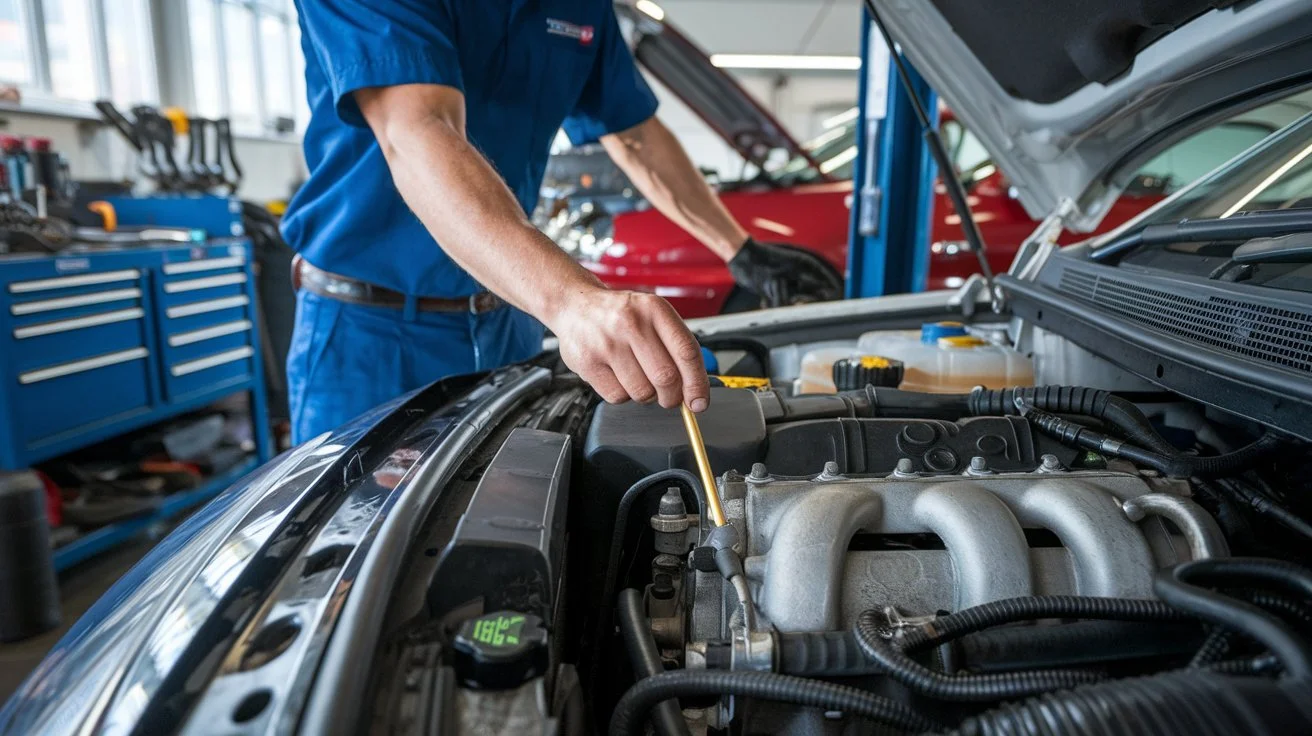 Date: November 29, 2024
Date: November 29, 2024
Your car's engine oil is what keeps it running flawlessly and avoids expensive damages. Not checking oil levels can result in serious threats like overheating, issues with fuel economy, or even destroying the engine. Deep down, we know that we can't control the upkeep of the vehicle, but at least we can learn to read our engine oil dipsticks. In this article, you will learn how to use a dipstick for engine oil by finding it and interpreting the amount and condition of oil on the dipstick. It does not matter whether you know how to drive or are about to learn; this skill is a must if you want your car to stay in shape, thus saving you time and money on repairs.
1. Locate the Dipstick in Your Vehicle
The first step to checking your engine oil is to find the dipstick. Most of them can be located near the engine and are purposely made with handles that are easy to find, often pink or some bright colour. Depending on the manufacturer of your car, the placement could vary. For front-wheel-drive vehicles, the dipstick is usually situated towards the front side of the engine, but in a rear-wheel-drive car, it should be towards the rear side. But if you are having trouble with the exact position, the owner's manual can provide answers. Certain modern vehicles may not have a conventional dipstick because they have replaced this with an electronic oil level monitor.
2. Understand Dipstick Marks
Checking the wax level on the dipstick is simple once the markings are clear. The commonly used dipsticks will have 'MIN' and 'MAX' factors or 'LOW' and 'FULL' indicators. The oil level should not, in any case, go beyond the marks. If there is a reading which is under the "MIN" or "LOW" reading then you are required to refill the oil. But it should also be noted that exceeding the 'MAX' and 'FULL' marks is also a problem since it brings too much pressure on the engine, which may turn out to be excessively harmful. These indicators tend to give an easy solution for determining the right amount of oil level for the machine.
3. Check Oil Level Correctly
To check the oil level in a car, it is important to perform the following steps carefully. First park the car on a level area and turn off the engine. Let the engine cool for around 10 minutes before you proceed any further. Now, take out the dipstick and use a cloth or towel to wipe to clean it. Stick it back inside the slot, pull it out once more, and check the oil level. The oil level marking on the dipstick should range, at most, between the 'MIN' and 'MAX' dots on the dipstick. In order to witness problems before they arise, make it a practice to check the oil level, except alongside a long drive, once every month.
4. Assess Oil Color and Consistency
In addition to the oil level, the colour and thickness of the oil are equally critical measures of an engine's condition. It is normal for an oil change to be changed as engine oil is usually light amber in colour and flows, but over factors may darken the oil with age. However, oily or foamy consistency suggests that there is coolant leakage, which is very dangerous and the same has to be rectified without any delay. Oil containing metallic particles meanwhile suggests high engine wear and this would have to be monitored by an expert.
5. Use the Recommended Oil Type and Viscosity
The manufacturer of each car has the guidelines in the manual regarding oil requirements. When it comes to ensuring optimal engine performance, it is advisable to make use of the recommended oil type as well as viscosity. Inaccurate oil selection may cause lubrication deficiencies, overheating, as well as poor fuel economy. In cases where you do not know which is the correct oil for your car, check the automobile manual or ask a reliable mechanic for help. Following these details will play a remarkable role in determining the lifespan of the car.
6. Avoid Common Mistakes
Oil maintenance is duly very important, and changing the engine oil correctly is slightly challenging, but all mistakes have consequences, and it is the same even in changing engine oil. Filling the oil to excess is another common cause of mistakes made during oil maintenance, and this can lead to an engine oil overdose, which might cause leaks and breakage, amongst other things. If there is an oil shortage, on the other hand, the engine is placed at risk of overheating and abrasion. In addition to these, pouring an unsuitable oil and not monitoring the oil can put great stress on your motor. All these mistakes can be avoided if all the procedures are followed and the car is maintained in a consistent manner.
7. Prioritize Regular Maintenance
Being able to assess oil levels is not just a one-and-done service. An engine that is regularly maintained is a healthy engine. The recommendation for oil changes, according to manufacturers, is usually after 5000-7500 miles, although with synthetic oil, longer durations could be between changes. Still, your vehicle's specific interval depends on your driving distance, conditions, and engine type. A person who follows a routine check and changes the oil at the right time will help with reducing excess wear and tear helping with enhancing your vehicle's durability and maintenance.
8. Recognize Vehicle Variations in Dipstick Location
Every vehicle will be slightly different in terms of where the oil dipstick is positioned or how the oil is checked. For some cars, the procedure may be simple, while in others, it can be quite complicated. That is how you will understand the layout of your particular vehicle and avoid wasting time and making errors. Remember to consult the owner's manual, which can be specific to your model, as it will cover all the important details.
9. Follow Safety Precautions While Checking Oil
There are many aspects that are important when working within your car or doing maintenance and that is safety. It is better to check the oil when the engine is cold and off as this will cause burns if the engine is hot. That said, the oil can be read correctly when the vehicle is parked on an even ground. If the correctly is not precise, instead of risking it and making newbie mistakes, it's better to make a call to a mechanic.
Conclusion
Aside from the cost of the repairs, not routinely checking the engine oil is also bad for the overall performance of the car, which is a simple aspect of maintenance. The clear, unwritten rule is no matter how much one spends, the cost is worth it as it saves a vehicle store. However, if a case comes where only a specialist can do it, then that that's mechanic should be contacted.
At Fasttrack Emarat, we also offer complete car maintenance services such as oil check-ups, changes, and vehicle diagnostics. Now, our experienced technicians will ensure that your car gets the best possible care and is always in its top condition. Today, through this thread, we invite you to visit your nearest Fasttrack Emarat and enjoy reliable, efficient, and professional car maintenance services.
